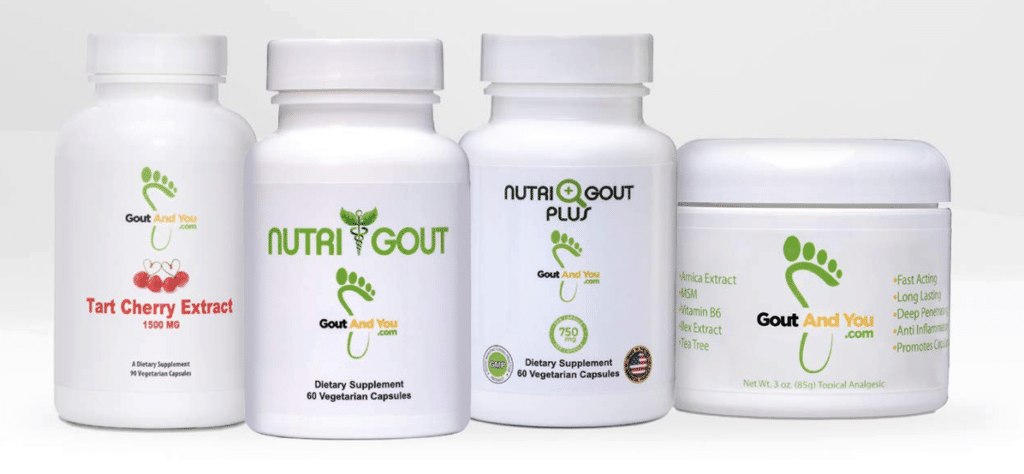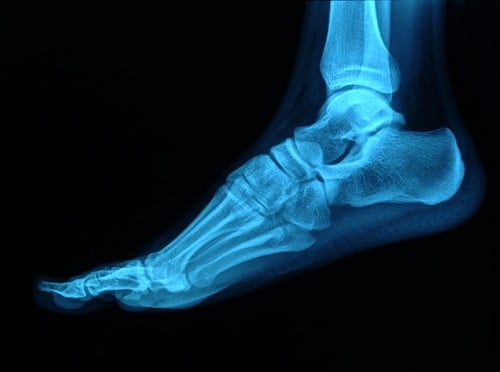Gout sufferers are all too familiar with the symptoms. The excruciating pain, the swelling, the redness. It’s not hard to recognize that what you’re having is a gout flare. But what most sufferers might not know is the damage that’s happening when they’re not in pain. This is called bone erosion and it can slowly affect your mobility without you knowing it. What happens is that crystal deposits interact with the bone and joint cells which lead to bone erosion.
Diagnosing Bone Erosion
Thankfully, there’s plenty of technology to help detect bone erosion. X-ray is the most basic tool that can identify bone erosion but there are other advanced machines as well such as ultrasound, MRI, and CT scan which can accurately detect bone erosion. If you visit the clinic, you may be checked using an ultrasound since it’s a readily available machine that can be operated by your radiologist.
Risks of Bone Erosion
There are not that many studies focusing on the risk of bone erosion on gout patients. The most recent one was conducted by Dr. Mian Wu from the Shanghai Jiao Tong University Affiliated Sixth People’s Hospital. Before the study, each participant was required to answer a questionnaire which documented their age, gender, duration of disease, comorbidities, medications, frequency of flares, and pain score, The study involved 980 patients who then underwent an ultrasound to check for bone erosions. Out of the 980, 431 or 44% were found to have signs of bone erosion. Of the 431, 338 had the erosion in the first metatarsophalangeal joint. This is the joint that connects your toe to your feet.
Furthermore, they found that 62.4% patients had detectable tophi. Those who had more than 2 tophi increased their risk by 15 times more. The size of the tophi did not affect one’s risk. Tophi is an advanced form of gout where deposits of uric acid crystals are so evident that it forms lumps on the skin. It’s already so severe that in some cases, surgery is required to remove the tophi.
In the study, they also found that age had a huge factor in one’s risk. The older the patient was, the higher their risk for bone erosion. The study shows that patients over 40 years old had double the risk of bone erosion. Those over 60 had almost a three times the risk for an eroded joint.
Based on the data gathered from the study, we can conclude that one’s risk for bone erosion related to gout may be traced back to four factors: duration of the gout condition, age, the number of tophi surrounding the gout, and the existence of synovial hypertrophy. Those who had bone erosion also had similar conditions including high blood pressure, high blood sugar, and kidney disease. If you have any of these conditions, you need to pay special attention to your bone health.
Gout may also lead to bone spurs. This is because inflammation on the joint can stimulate the lining of the bone next to it to grow. This protrusion can grow to as long as 5cm causing pain and numbness in the area. What’s scary is that most of these bone spurs are undiagnosed so you can go on growing an abnormal bone until it damages your nerves.
If your doctor detects a bone spur, they will have you undergo a simple operation to chisel it off. After that, you will be advised take allopurinol so the nerve can recover and the abnormal growth doesn’t come back.

How To Avoid Bone Erosion
Bone erosion related to gout can be avoided. The earlier the diagnosis, the better since this allows you to take the proper steps to prevent gout from getting worse. Your doctor will recommend that you lower your uric acid using a variety of strategies which include drinking lots of water, exercising regularly, eating a low-purine diet, and taking urate-lowering drugs.
Gout medication can be divided to two types: short term and long term. Short term medication is used only during gout flares while long term medication is used permanently. This helps sufferers manage their uric acid levels so it doesn’t reach a point where a the patient experiences another flare.
Speaking of flares, you need to avoid getting flares as much as possible. It’s extremely uncomfortable and it’s a sign that your uric acid levels are high. Not only that but certain medications used to treat a flare often lead to long-term risks to your bone health. Corticosteroids and colchicine are examples of drugs that can affect the bones resulting in bone thinning, infection, and inability to produce blood cells.
If you have been good with your lifestyle, you may be tempted to stop medication. But doing so might only make uric acid build up more likely. It’s best to stick to your long-term gout medication since it’s the only sure way that your uric acids remain low and you can prevent bone damage. It should not exceed 6.0mg/dL. If it does, consider tweaking your diet. Speak with a doctor and dietician if you must as they can give you advice on how to lower your uric acid.
Can Bone Erosion Be Reversed?
In young individuals, it’s easy to reverse bone erosion since their body creates new bones faster. However, the older you get, the harder it will be do so since the body creates less new bones and absorbs nutrients from old bones which are not really that great anymore. However, if you maintain your health well into your old age, it may be easier to regenerate new bones although it will be at a much slower pace.
The key is to feed your body with minerals that support bone health. The most obvious is calcium which helps make new bones and keep them strong. When supplementing with calcium, make sure to complement it with vitamin D to allow the body to absorb the calcium. Also add calcium-rich foods to your diet such as milk, cheese, and yogurt. Not only are they great for your bones, they also may help lower uric acid.
Exercise is also another great way to fight the nasty effects of bone erosion. Certain exercises such as weight-training and muscle strengthening help improve bone density, stimulate the production of new cells in the bones, and slow down bone loss. You can choose from a variety of exercise which include fast walking, jogging, dancing, weight lifting, and push ups.
Have you experienced bone complications due to gout? Share your stories in the comments below.
